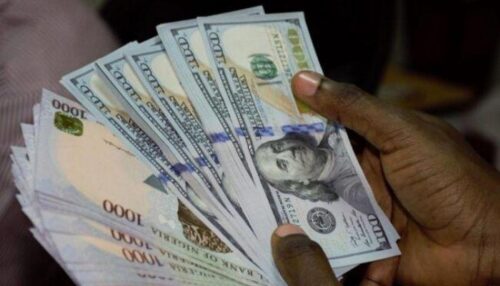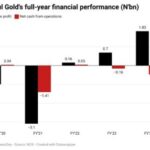Nigeria’s foreign exchange market, which faced severe turbulence throughout 2024, is beginning to show signs of stability due to key policy changes implemented by the current administration. According to a recent report by PwC, an advisory and tax consultancy firm, five major factors are helping to ease pressure on the naira and could lead to further improvements in 2025.
For much of 2024, the naira was among the world’s worst-performing currencies, alongside the Lebanese pound, losing around 41% of its value and experiencing extreme volatility. However, reforms introduced by the Central Bank of Nigeria (CBN) are gradually restoring confidence in the currency.

1. Price Discovery and Exchange Rate Unification
One of the biggest challenges in Nigeria’s FX market was the presence of multiple exchange rates, which created opportunities for arbitrage and market inefficiencies. The CBN has prioritized unifying these rates, ensuring that the naira’s value is now determined by real market forces rather than artificial controls. This move has helped reduce uncertainty and create a more predictable exchange rate environment.
2. Increased Transparency and Market Efficiency
Under the leadership of Olayemi Cardoso, the CBN has implemented policies aimed at improving transparency and reducing market friction. In the past, businesses and investors faced significant bureaucratic hurdles when accessing foreign exchange, which contributed to inefficiencies and instability.
With the introduction of reforms such as the Electronic Foreign Exchange Market System (EFEMS) and the new FX Code, the process of obtaining forex has become more streamlined and predictable. These measures have encouraged greater investor confidence and reduced speculative trading that previously fueled naira depreciation.
3. Improved Dollar Liquidity from Oil and Capital Inflows
A key factor stabilizing the naira is increased foreign exchange liquidity, largely driven by improved oil production and higher capital inflows.
- In December 2024, Nigeria’s average daily crude oil production reached 1.49 million barrels per day (mbpd), inching closer to the government’s 2.06 mbpd target for 2025. Since crude oil exports remain Nigeria’s largest source of foreign exchange earnings, higher production means more dollar inflows.
- Foreign investments are also picking up. In Q3 2024, capital importation rose by 91.35%, reaching $1.25 billion, signaling renewed investor interest in Nigeria.
- Diaspora remittances through international money transfer operators (IMTOs) hit $4.22 billion between January and October 2024, nearly doubling the $2.62 billion recorded in the same period the previous year.
These developments have improved dollar availability in the Nigerian market, reducing exchange rate volatility.
4. Clearing of FX Backlogs
Nigeria’s foreign exchange crisis was worsened by a $7 billion backlog of unmet FX requests, which created uncertainty and discouraged investment. The CBN under Cardoso has made significant efforts to clear these outstanding forex demands, allowing businesses and investors to access the dollars they need for transactions. This move has helped restore confidence and reduce panic-driven demand for forex.
5. Renewed Investor Confidence
Before these reforms, Nigeria’s foreign exchange market was marked by inconsistencies and regulatory uncertainties, leading both local and foreign investors to stay on the sidelines. However, efforts to improve transparency and stabilize the naira have reignited investor interest in Nigeria’s economy.
The International Monetary Fund (IMF) recently noted that the Nigerian capital market is experiencing a resurgence of investor confidence. PwC also highlighted that global portfolio investors are beginning to show renewed interest in the Nigerian market, thanks to these recent reforms.
Economic forecasts suggest that if these policies are sustained, the naira could stabilize at an average of N1,300 per U.S. dollar throughout 2025, according to projections from the Nigeria Economic Summit Group (NESG).
Conclusion
While challenges remain, Nigeria’s foreign exchange market is showing signs of recovery, driven by improved liquidity, regulatory reforms, and investor confidence. If the current trajectory continues, 2025 could see a more stable and predictable naira, easing pressure on businesses and consumers alike.


